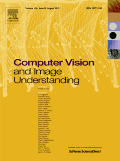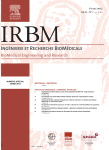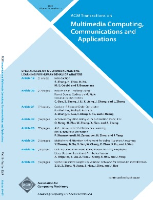
SIGNAL PROCESSING-IMAGE COMMUNICATION
Scope & Guideline
Connecting Insights in Signal Processing and Imaging
Introduction
Aims and Scopes
- Image Processing Techniques:
The journal emphasizes the development and application of advanced image processing techniques, including image enhancement, restoration, and segmentation methodologies. - Computer Vision and Machine Learning:
There is a strong focus on the integration of machine learning and deep learning methods in computer vision tasks, facilitating improved object detection, recognition, and scene understanding. - Multimedia Communication:
Research related to multimedia communication, including video coding, streaming, and quality assessment, is a core area, addressing the challenges in efficient transmission and representation of visual data. - Quality Assessment and Enhancement:
The journal explores methods for assessing and improving image and video quality, focusing on no-reference quality metrics and enhancement algorithms. - Cross-Modal and Multimodal Processing:
Research on cross-modal processing, particularly in the context of integrating data from different modalities (e.g., RGB-D images, infrared-visible fusion) is highlighted. - Application-Specific Innovations:
The journal also encourages submissions that demonstrate the application of image processing techniques in specific domains such as medical imaging, autonomous driving, underwater imaging, and more.
Trending and Emerging
- Deep Learning in Image Processing:
The journal has seen a surge in papers applying deep learning techniques to various image processing tasks, including super-resolution, segmentation, and enhancement, indicating a trend towards AI-driven methodologies. - Underwater and Low-Light Imaging:
Research focusing on underwater image enhancement and low-light imaging techniques is gaining traction, highlighting the need for specialized solutions in challenging imaging environments. - Quality of Experience (QoE) in Multimedia:
There is an increasing emphasis on the assessment and enhancement of user experience in multimedia applications, particularly concerning video quality and user satisfaction metrics. - Real-time Processing and Applications:
Emerging themes include real-time image processing and applications, particularly in areas such as autonomous systems and interactive media, reflecting the demand for efficiency and speed. - Cross-Modal Learning:
Growing interest in cross-modal learning, where techniques leverage information from multiple modalities (e.g., RGB and depth) for improved performance in tasks like object detection and recognition.
Declining or Waning
- Traditional Image Coding Techniques:
There has been a noticeable reduction in papers focused on traditional image coding methods as newer, more efficient techniques emerge, particularly those leveraging machine learning. - Basic Image Enhancement Techniques:
Basic image enhancement methods seem to be less prevalent, possibly due to the rise of more sophisticated approaches that utilize deep learning for enhancement tasks. - Manual Feature Extraction Methods:
Research centered around manual or heuristic feature extraction techniques is waning, as deep learning methods that automatically learn features become the standard. - Theoretical Analysis without Practical Application:
Papers focusing solely on theoretical aspects of image processing without practical implementations or applications are becoming less common, reflecting a shift towards applied research.
Similar Journals

MULTIMEDIA SYSTEMS
Navigating the Future of Media TechnologyMULTIMEDIA SYSTEMS, published by SPRINGER, is a premier academic journal dedicated to the dynamic field of multimedia technology and its applications across various domains. With the ISSN 0942-4962 and E-ISSN 1432-1882, this journal has established itself as an essential resource since its inception in 1993, providing researchers and professionals with rigorous peer-reviewed articles that explore innovative developments in Media Technology, Computer Networks, Hardware Architecture, Information Systems, and Software. As a testament to its academic impact, MULTIMEDIA SYSTEMS has attained a Q2 ranking in multiple key categories for 2023, alongside a notable Q1 ranking in Media Technology, highlighting its significance within the community. With a rich repository of knowledge and ongoing commitment to advancing multimedia research, this journal is an invaluable asset for those seeking to stay informed about cutting-edge technologies and methodologies. While the journal follows a traditional subscription model and is not presently open access, it ensures high-quality content that serves the scholarly needs of its audience, facilitated by its accessibility from Germany's respected academic infrastructures. For inquiries and submissions, the journal is based in New York, NY, further illustrating its global academic reach.

COMPUTER VISION AND IMAGE UNDERSTANDING
Advancing the Frontiers of Vision and UnderstandingCOMPUTER VISION AND IMAGE UNDERSTANDING is a leading academic journal published by Academic Press Inc, Elsevier Science, dedicated to the advancement of the fields of computer vision, image understanding, and pattern recognition. Since its inception in 1993, this esteemed publication has garnered a reputation for excellence, achieving a remarkable Q1 ranking in the categories of Computer Vision and Pattern Recognition, Signal Processing, and Software as of 2023. With its robust impact factor and high visibility in the scientific community—ranking #22 out of 106 in Computer Vision and Pattern Recognition and #27 out of 131 in Signal Processing—this journal serves as a vital resource for researchers, professionals, and students looking to explore and contribute to state-of-the-art developments. Although it does not operate under an Open Access model, its rigorous peer-reviewed content ensures quality and relevance in a rapidly evolving technological landscape. The journal’s commitment to fostering innovation makes it an essential tool for anyone engaged in the study and application of computer vision technologies.

Jordan Journal of Electrical Engineering
Exploring the Frontiers of Energy SystemsJordan Journal of Electrical Engineering, published by TAFILA TECHNICAL UNIVERSITY (TTU) in Jordan, serves as a critical platform for disseminating groundbreaking research in the fields of electrical engineering, energy systems, and related disciplines. With an ISSN of 2409-9600 and an E-ISSN of 2409-9619, the journal is committed to promoting advancements in energy engineering, biomedical applications, control systems, and signal processing among others. Despite its recent establishment in 2023, it has been indexed in multiple categories within Scopus, receiving rankings that reflect its emerging role in the academic community. Researchers and professionals are encouraged to contribute and access cutting-edge articles through open access options, ensuring that knowledge is readily available to all interested parties. As the journal continues to grow, it aims to bridge gaps in knowledge and stimulate dialogue, thereby supporting innovation and practical applications in the engineering sector.

INTERNATIONAL JOURNAL OF COMPUTER VISION
Pioneering Insights in Visual Intelligence.INTERNATIONAL JOURNAL OF COMPUTER VISION, published by Springer, is a premier peer-reviewed journal that stands at the forefront of the fields of Computer Vision and Artificial Intelligence. With a remarkable impact factor and rankings placing it in the Q1 category across key areas such as Computer Vision and Pattern Recognition, as well as Software, this journal serves as an essential resource for researchers, professionals, and students alike. Since its inception in 1987, it has aimed to advance the understanding and methodologies within the rapidly evolving landscape of computer vision technologies. Its location in the Netherlands underlines its international significance, and with Scopus rankings placing it in the top percentiles of its categories, the journal is recognized for its contribution to groundbreaking research and innovative applications. Although it is not an open-access journal, it still provides extensive access options through institutional and personal subscriptions, offering its readers in-depth insights and findings pivotal to their work in artificial intelligence and computational technologies.

Computational Visual Media
Connecting global minds in computational visual media.Computational Visual Media, published by TSINGHUA UNIVERSITY PRESS, is a premier open access journal dedicated to advancing the fields of Artificial Intelligence, Computer Graphics and Computer-Aided Design, and Computer Vision and Pattern Recognition. Since its inception in 2015, it has established a robust position within the academic community, consistently achieving Q1 rankings across its categories as of 2023. With exceptional Scopus rankings, including a remarkable percentile standing in the top 10% globally, the journal serves as a vital resource for researchers, professionals, and students eager to explore cutting-edge methodologies and technologies in computational visual media. The journal’s open access format enhances accessibility, fostering global collaboration and dissemination of knowledge, making it an indispensable platform for those at the forefront of innovation in these dynamic fields. The journal is headquartered in Beijing, China, and aims to publish high-quality research that not only contributes to theoretical advancements but also addresses practical challenges within computational visual technologies.

EURASIP Journal on Image and Video Processing
Igniting Innovations in Image and Video ApplicationsEURASIP Journal on Image and Video Processing, published by Springer, is a leading open-access journal dedicated to the dissemination of significant advancements in the field of image and video processing. Since its inception in 2007, the journal has been pivotal in bridging the gap between theoretical research and practical applications, serving a diverse audience of researchers, professionals, and students. With an impressive impact factor reflected in its 2023 Scopus rankings—ranking Q2 in Electrical and Electronic Engineering, Information Systems, and Signal Processing—this journal showcases innovative methodologies, applications, and technologies in the realm of image and video processing. Authors benefit from the journal's open-access model, promoting widespread visibility and accessibility of their work. Located in the heart of New York City, the journal continues to evolve, covering converged years from 2007 to 2024, ensuring it remains at the forefront of research in a rapidly changing technological landscape.

IRBM
Catalyzing Transformative Ideas in Life Sciences ResearchIRBM, published by Elsevier Science Inc, stands at the forefront of research in the domains of Biomedical Engineering and Biophysics, boasting impressively high rankings with a Q1 category in both fields according to the 2023 evaluations. With an effective focus on cutting-edge innovations and methodologies, IRBM provides a vital platform for researchers, professionals, and students alike seeking to disseminate and access groundbreaking findings and developments. Its strong presence in the Scopus database, with ranks of #12 in Biochemistry, Genetics and Molecular Biology and #42 in Biomedical Engineering, places it in the top percentile of impactful journals in the field, making it a crucial resource for advancing knowledge and fostering collaboration. While the journal maintains a traditional subscription model, it continues to attract a diverse readership eager for insightful studies and reviews that push the boundaries of science and engineering. With a projected convergence of years extending to 2024, IRBM promises to remain a significant contributor to the ongoing dialogue in the life sciences.

Traitement du Signal
Illuminating the Path of Electrical InnovationTraitement du Signal, published by the INT Information & Engineering Technology Association, is a distinguished journal that serves the vibrant field of Electrical and Electronic Engineering. With an ISSN of 0765-0019 and an E-ISSN of 1958-5608, this journal has made significant contributions to the discipline since its inception. While it currently operates under a non-open access model, it maintains its commitment to disseminating valuable research from 2010 to 2023, despite its recent discontinuation in Scopus coverage. Recognized in the third quartile (Q3) of the category in 2022, the journal provides a platform for researchers, professionals, and students to publish their findings on topics such as signal processing, communications, and related technologies. By curating high-quality articles, Traitement du Signal plays a crucial role in advancing knowledge and fostering innovation within the electrical and electronic engineering community.

ACM Transactions on Multimedia Computing Communications and Applications
Exploring the Future of Multimedia Innovation.ACM Transactions on Multimedia Computing, Communications, and Applications is a premier journal published by the Association for Computing Machinery (ACM), pivotal in the field of Computer Networks and Communications and Hardware and Architecture. With an impressive 2023 impact factor, this journal holds a commendable Q1 ranking in both its categories, solidifying its significance within the research community. The journal welcomes high-quality research that explores innovative technologies and methodologies in multimedia computing and communication as well as applications that enhance user experiences. While it remains a subscription-based journal, it provides unparalleled access to groundbreaking studies, serving as an essential resource for researchers, professionals, and students seeking to stay at the forefront of multimedia technologies. Spanning from 2005 to 2024, the journal offers a rich repository of knowledge and is committed to fostering advancements in the multimedia domain.

Journal of Imaging
Advancing the Future of Imaging TechnologiesThe Journal of Imaging, published by MDPI, is an esteemed open-access journal dedicated to advancing the fields of Computer Graphics, Computer Vision, and Electrical Engineering. Since its inception in 2015, this journal has established a significant presence in the academic community, reflected by its impressive rankings in Scopus, including a Q2 quartile in multiple categories such as Computer Vision and Pattern Recognition and Radiology. With a commitment to disseminating high-quality research, the journal offers a platform for innovative studies and practical applications, making it an essential resource for researchers, professionals, and students alike. Operating from its base in Basel, Switzerland, the journal continues to promote scholarly work that pushes the boundaries of imaging technologies, while contributing to the global discourse in its respective fields. The open-access model ensures that valuable research is readily available, fostering collaboration and knowledge-sharing across disciplines.